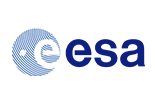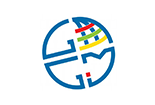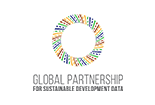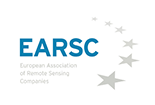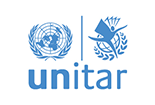Using Earth Observation Data to Improve Fire Emission Calculations: A Case Study in Italy

SDGs-EYES is a project funded by the European Union which aims at boosting the European capacity for monitoring and reporting the Sustainable Development Goals (SDGs). The following publication was created by the SDGsEYES GHG Emissions from Fire Pilot Team. The blog authors consist of Chiara Aquino, Manuela Balzarolo from CMCC and Mónica Miguel-Lago from EARSC.
The objective of the pilot is “to increase the accuracy and completeness of fire emissions calculations from forest lands for three main GHGs (carbon dioxide, nitrous oxide and methane) by exploiting Copernicus datasets, improving the spatio-temporal detail of burnt areas and vegetation type/status.” To learn more about the project, you can visit their website HERE.
Climate Change and the New Pilot
As climate change continues, wildfires are becoming a growing threat to both the environment and public safety. The Mediterranean region is increasingly vulnerable to wildfires due to rising temperatures and prolonged droughts. A new pilot project is using Earth observation (EO) data to make fire emission calculations more accurate, supporting Sustainable Development Goal 13 (SDG 13).
Refining GHG Emissions Calculations Using Copernicus Data
The project is improving how GHG emissions from forest fires are calculated, focusing on key gases like carbon dioxide (CO2), methane (CH4), and nitrous oxide (N2O). Using data from the Copernicus Climate Change Service (C3S) and other high-resolution EO sources, the project is providing more detailed information on burned areas and the condition of vegetation. This is crucial for improving GHG emission estimates, particularly for the Land Use, Land Use Change, and Forestry (LULUCF) sector, which is important for Italy’s national emissions data. The project is also developing a tool that uses Copernicus data to create detailed maps of fire-related GHG emissions across Italy. These maps will be made available through the SDGs-EYES service, helping policymakers make informed decisions by providing reliable data.
Collaborative Efforts and Stakeholder Engagement
Led by the Euro-Mediterranean Center on Climate Change (CMCC), with support from SISTEMA and MEEO, the project works with key stakeholders. These include the Italian State Forestry Corps, responsible for gathering data on burned areas, and the Italian Institute for Environmental Protection and Research (ISPRA), which uses this information for national emissions reports. Italy’s National Statistical Office (ISTAT) also publishes this data as part of the country’s SDG indicators.

A One-Stop Platform for Forest Fire Emissions Calculation and Visualisation
The project generates detailed maps for every forest fire event in Italy, allowing users to explore fire impacts at various administrative levels—from national to regional, provincial, and even local scales. The user can easily select their area of interest and the specific year for analysis. The knowledge gained from this project is helping guide similar efforts in other regions, showing how EO data can be a powerful tool in addressing climate challenges.

To learn more about SDGsEYES and the work they do, head to their website, SDGsEYES.
Date Published: November 11th, 2024






